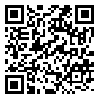Thu, Dec 25, 2025
Volume 9, Issue 2 (Spring 2019)
PTJ 2019, 9(2): 117-124 |
Back to browse issues page
Download citation:
BibTeX | RIS | EndNote | Medlars | ProCite | Reference Manager | RefWorks
Send citation to:



BibTeX | RIS | EndNote | Medlars | ProCite | Reference Manager | RefWorks
Send citation to:
Abdoli A, Nakhostin Roohi B. Effect of Extracorporeal Shockwave Therapy Versus Stretching in the Treatment of Athletes With Chronic Plantar Fasciitis. PTJ 2019; 9 (2) :117-124
URL: http://ptj.uswr.ac.ir/article-1-401-en.html
URL: http://ptj.uswr.ac.ir/article-1-401-en.html
1- Department of Physical Education and Sport Sciences, Faculty of Human Sciences, Shams Education Institute of Science and Technology, Tabriz, Iran.
2- Department of Physical Education and Sport Sciences, Faculty of Human Sciences, Ardabil Branch, Islamic Azad University, Ardabil, Iran.
2- Department of Physical Education and Sport Sciences, Faculty of Human Sciences, Ardabil Branch, Islamic Azad University, Ardabil, Iran.
Abstract: (4795 Views)
Purpose: Extracorporeal shockwave therapy (ESWT) is a relatively new method in the treatment of musculoskeletal disorders such as plantar fasciitis. This study aimed to compare two methods of treatment with extracorporeal shockwave and stretching in athletes with chronic plantar fasciitis.
Methods: The study was a randomized clinical trial. A total of 30 male athletes with chronic plantar fasciitis voluntarily participated in this study. The subjects were randomly divided into two groups; ESWT (n=15) and stretching exercises (n=15). Both treatment methods were applied once a week for five weeks. Pain, the range of motion (ROM) of the ankle joint, and the strength of the plantar flexors of the ankle were assessed, using visual analog scale (VAS), goniometer, and dynamometer before and after the interventions.
Results: VAS scores significantly decreased in both groups after the treatment (P<0.001). Furthermore, after the treatment, the ROM and the strength of plantar flexors increased dramatically in both groups (P<0.001). There were no significant between-group differences at any time (P>0.05).
Conclusion: This study suggests that both methods of stretching and ESWT are suitable methods for improving the symptoms in chronic plantar fasciitis. There was no significant difference in the effect of both types of treatment. According to the results, stretching is easier, non-invasive, and less costly method. So, it seems to be a preferable method for ESWT. However, more studies are required because of the limitations of this research.
Methods: The study was a randomized clinical trial. A total of 30 male athletes with chronic plantar fasciitis voluntarily participated in this study. The subjects were randomly divided into two groups; ESWT (n=15) and stretching exercises (n=15). Both treatment methods were applied once a week for five weeks. Pain, the range of motion (ROM) of the ankle joint, and the strength of the plantar flexors of the ankle were assessed, using visual analog scale (VAS), goniometer, and dynamometer before and after the interventions.
Results: VAS scores significantly decreased in both groups after the treatment (P<0.001). Furthermore, after the treatment, the ROM and the strength of plantar flexors increased dramatically in both groups (P<0.001). There were no significant between-group differences at any time (P>0.05).
Conclusion: This study suggests that both methods of stretching and ESWT are suitable methods for improving the symptoms in chronic plantar fasciitis. There was no significant difference in the effect of both types of treatment. According to the results, stretching is easier, non-invasive, and less costly method. So, it seems to be a preferable method for ESWT. However, more studies are required because of the limitations of this research.
Keywords: Chronic plantar fasciitis, Extracorporeal shockwave therapy, Passive Stretching, Visual analog scale
Type of Study: Research |
Subject:
Sport injury and corrective exercises
Received: 2019/06/17 | Accepted: 2019/08/28 | Published: 2019/11/12
Received: 2019/06/17 | Accepted: 2019/08/28 | Published: 2019/11/12
Send email to the article author
| Rights and permissions | |
 |
This work is licensed under a Creative Commons Attribution-NonCommercial 4.0 International License. |






